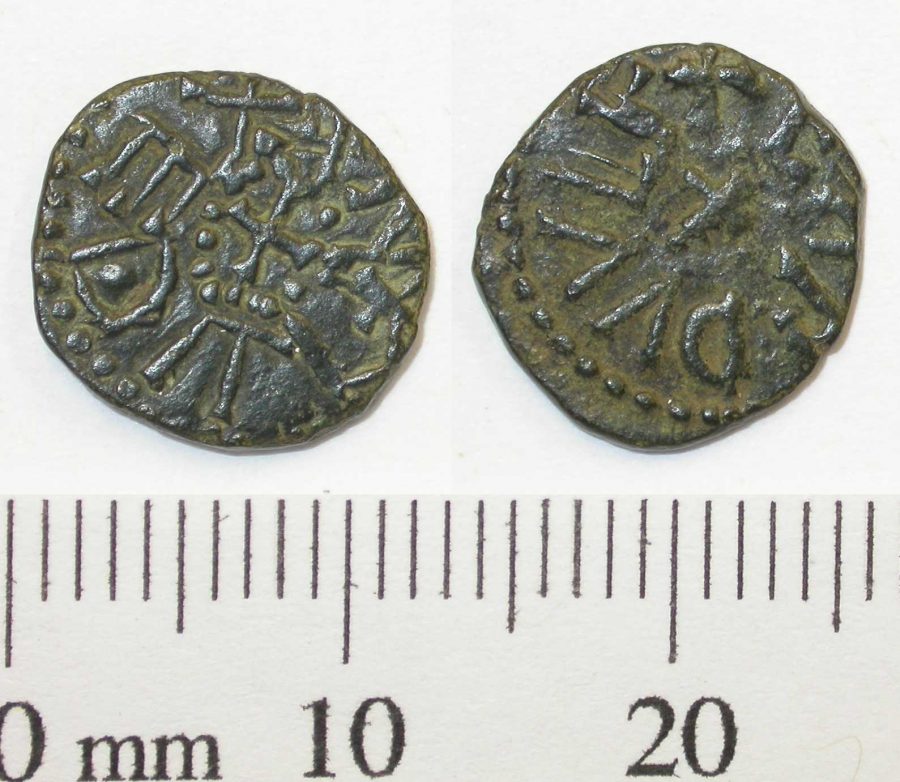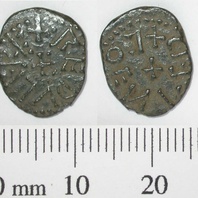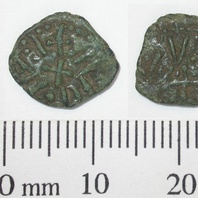
Description
Northumbrian Styca (DENO-87CE96)
A copper-alloy Northumbrian styca found at Torksey, Lincolnshire
This copper-alloy styca was minted by the moneyer Eardwulf in the name of King Ethelred II of Northumbria during his second reign. While Wessex and Mercia were using silver coinage as part of their monetary economy, Northumbria was using copper coins known as stycas, which may have contained trace amounts of silver. The concentration of these coins at sites such as Torksey and ARSNY suggests that they could have remained in circulation after the fall of Northumbria in 866 but were taken to the sites by the Vikings during their campaigning. they were not much use to the Vikings within their silver-based bullion economy but it is suggested that they were treated as raw material and were used as commodity money instead. The evidence for the production of copper-alloy strap-ends at Torksey and ARSNY supports this idea that the stycas were used for production.
Object Type
- Coin
Date
- circa 844 — 849
Style
Ascribed Culture
Original/Reproduction
- Original
Material
Collection
- Viking Objects
Current Location
- Private Ownership
Keywords
- Anglo-Saxon, bullion, coin, copper_alloy, Currency, Economy, Lincolnshire, metal_working, Northumbria, Portable_Antiquities_Scheme, styca, Torksey, trade
Further information
You can see the original at Private Ownership.
This object is related to
Torksey, Lincolnshire.
Find out about Torksey, Lincolnshire.
Acknowledgements
(c) Portable Antiquities Scheme, CC BY-SA 4.0
References
Williams, Gareth. “Viking camps and the means of exchange in Britain and Ireland in the ninth century.” In Clarke, Howard B., and Ruth C. Johnson, eds. The Vikings in Ireland and beyond: before and after the Battle of Clontarf. (Dublin: Four Courts Press, 2015), 93-116.
Hadley, Dawn M., and Julian D. Richards. “The winter camp of the Viking Great Army, AD 872–3, Torksey, Lincolnshire.” The Antiquaries Journal 96 (2016): 23-67.



